So, I had this professor once who always used to say that you should try to leave even one line of yourself in this world. His statement made me write not one line but several articles, one book, and thousands of blogs.
To add publications to your LinkedIn profile, go to the "Accomplishments" section and click on "Publications." Then, click on "Add new" and fill in the details of your publication, such as the title, publisher, and publication date. Finally, save the changes to showcase your publications on your LinkedIn profile.
Publications are one of the things that can show a person’s genius and hard work, especially in an academic environment. But your publications can get used in scientific or academic atmospheres and in other industries. Yes, they can be effective in finding a decent job.

Personally, I got my first official job through one of my articles. That’s why I recommend everyone to publish something (article, book, blog, etc.) and mention it on their LinkedIn profile. Because as a job-oriented platform, with more than a billion users, LinkedIn is the world’s largest pool of business opportunities (jobs, partners, prospects, mentors, etc.) Believe it or not, publications can be a positive point for you in this huge pool.
In this article, I will discuss adding publications to LinkedIn. So, if you want to attract the attention of recruiters, mentors, potential partners, etc. to your profile, make sure to read this article fully.
what is the main reason for adding publications to your profiles?
There are several reasons why adding publications to your LinkedIn profile is important:
1. Builds Credibility:
Adding publications to your LinkedIn profile can demonstrate your expertise and establish your credibility in your field of work. This can help you stand out from other professionals and attract potential employers or clients who are looking for someone with your level of knowledge and experience.
2. Builds your personal brand:
Your LinkedIn profile is an important part of your personal brand. By adding publications, you can demonstrate that you are an expert in your field and are actively engaged in professional development.
3. Increases your visibility:
Adding publications to your profile can increase your visibility on LinkedIn. When you add a new publication, it will appear in your connections’ news feeds, which can help you reach a larger audience and attract new connections.
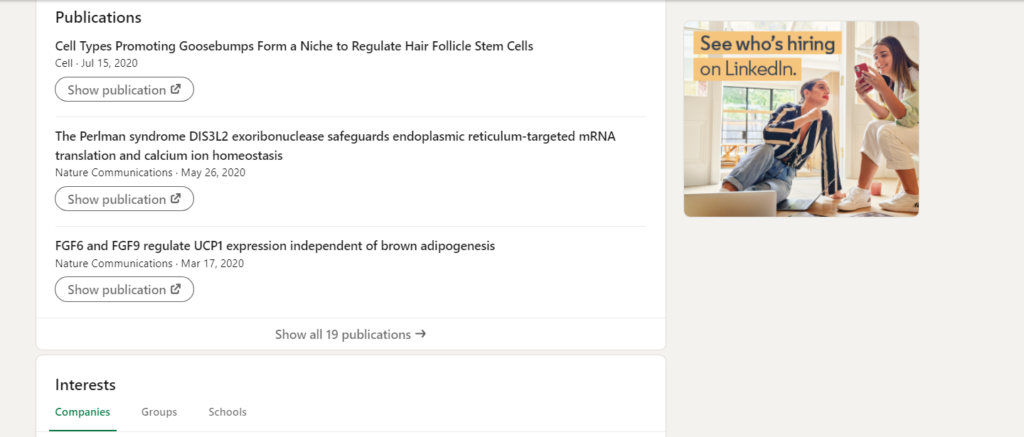
4. Demonstrates thought leadership:
If you’re looking to establish yourself as a thought leader in your industry, adding publications to your LinkedIn profile is a great way to do so. By sharing your research, opinions, or insights on a particular topic, you can demonstrate your expertise and provide valuable information to your connections.
How to Add Publications to Your LinkedIn Profile?
Here’s how to do it:
1. Log in to your LinkedIn account
2. Click Me at the top of your LinkedIn homepage
3. Select View Profile from the drop-down menu.

4. on your profile page, click the “Add Profile Section” button located just below your profile picture.

3. Go to the “Additional” section and click on “Add publications”.

4. Fill in the required fields, including publication title, publication date, publisher, and any relevant address or description.
6. Click “Save” to add your publication to your profile.

To learn more about this matter, you can watch tutorial videos on YouTube.
Can I Add Publications to LinkedIn?
Yes, you can add publications to your LinkedIn profile. Adding publications to your profile can enhance your professional credibility, showcase your expertise, and provide valuable insights to your network.
How DO I Post a Published Article on LinkedIn?
To post a published article on LinkedIn,
First, log in to your LinkedIn account.
Then, navigate to the LinkedIn homepage and click the “Write article” option in the sharing box.

This will take you to the article editor, where you can copy and paste the content of your published article.
Make sure to include a catchy headline, relevant tags, and an engaging introduction.
You can also add images, videos, and links to enhance your post.
Once you’re satisfied with the formatting, click on the “Publish” button to share your article with your LinkedIn network.

How DO I Share My Research Paper on LinkedIn?
To share your research paper on LinkedIn, start by creating a post on your LinkedIn profile.
Craft a brief introduction highlighting the significance of your research and its potential impact.
Then, upload a visually appealing image related to your paper to attract attention.
Next, attach your research paper as a document or provide a link to where it can be accessed.
Finally, encourage engagement by inviting comments and feedback from your network.
How to Add Publications to the LinkedIn App?
1. Open the LinkedIn app on your mobile phone.

2. Tap on your profile picture in the upper left corner of your LinkedIn screen.

3. Tap on the “View profile” button.

4. Tap on the “Add section” button in the introduction section of your profile.

5. Navigate to the “Additional” section and tap on the “Add publications” option.

6. Complete the form and then tap on the “Save” button.

Is It Possible to Automatically Add Publications to LinkedIn?
It’s not currently possible to automatically add publications directly to your LinkedIn profile. Instead, LinkedIn provides a section where users can manually enter their publications, including details like the title, publication date, publisher, and a brief description.
How to Add Articles to LinkedIn Profile?
To add articles to your LinkedIn profile, follow these simple steps:
1. Open your LinkedIn account and click “Me” at the top of any LinkedIn page.
2. Click “View Profile” to go to your LinkedIn profile.

3. Scroll down to the “Featured” section.
Note: If you haven’t already added a Feature section to your LinkedIn profile, just follow the following path through your profile page: Add Profile Section <Recommended < Add Feature
4. Click the “+” icon to add articles.

5. Select “Add an article” from the drop-down menu.

6. Click the “Feature” button at the bottom of the “Add an article” pop-up window.

How to Add Publications to LinkedIn Resume?
If you want to add publications to your LinkedIn resume, you need to add a section called Publications to your profile page.
To do that, follow these steps: Go to your LinkedIn profile page and click the Add Profile section button, scroll down to the Additional section, and from there, click the Add Publications button. Enter the information about the publications and click the Save option at the end.
Now, you can create a resume from your LinkedIn profile page.
What Is Considered a Publication on LinkedIn?
Publications on LinkedIn typically refer to articles, blog posts, books, research papers, or any other type of content you have authored or contributed to, such as podcasts or videos.
These publications can cover a wide range of topics, including industry insights, thought leadership, research findings, or personal experiences.
Where Is the LinkedIn Publications Section?
The Publications section on LinkedIn is located at the bottom of your profile page, between the “Skills” and “Interests” sections.
Reach More Ideal Prospects with CUFinder LinkedIn Extension
CUFinder LinkedIn Extension helps you uncover your ideal prospects’ contact data while browsing LinkedIn.
This tool easily syncs the latest individuals, firms or organizations, and event data.
If you want to discover more prospects’ contact data on LinkedIn right now, click here to download it to your desktop!
Here are some tips to help you get the most out of adding publications to your LinkedIn profile:
1. Choose relevant publications: When adding publications to your profile, choose only those that are relevant to your industry or field. This will help you establish your expertise and build your personal brand.
2. Highlight your best work: While you may be tempted to include every publication you’ve ever written, it’s best to only highlight your best ones. This will help you stand out from other professionals and demonstrate your expertise to potential employers or clients.
3. Use descriptive titles and descriptions: The titles and descriptions of your publications should be brief, clear, and descriptive. Use language that gives readers a sense of what your work is about and why it matters.

4. Include URLs: If your publication is available online, Make sure to include a URL in your publication description. This makes it easy for readers to access your work.
5. Keep your profile up to date: Finally, it is important to keep your LinkedIn profile up to date. If you publish new work or receive new awards, make sure to add them to your profile to keep your personal brand up-to-date and relevant.
Adding publications to your LinkedIn profile is an effective way to demonstrate your expertise, build credibility, and build your personal brand. By following these tips and best practices, you can create a compelling profile that showcases your knowledge and experience and helps you stand out in your industry.
Whether you’re a job seeker, entrepreneur, or professional looking to expand your network, adding publications to your LinkedIn profile is an invaluable tool for building your career and achieving your professional goals.
What Publication Should I Put On LinkedIn?
So far, we have understood the importance of publications on LinkedIn, how to add them to the profile, and some tips about them. But many people might wonder if it is possible to put anything in an online publication?
LinkedIn is a professional networking platform that allows you to showcase your skills and experience to potential employers, clients, and colleagues. One of the most effective ways to build your personal brand on LinkedIn is to add publications to your profile.

Publications can include academic articles, research studies, blog articles, and other types of content that showcase your expertise and knowledge in a specific field.
When choosing publications to add to your LinkedIn profile, it’s important to consider the following factors:
1. Relevance: The publications you choose to display on your LinkedIn profile should be relevant to your industry or field. For example, if you are a software developer, you should focus on publications related to software development rather than personal articles or fiction.
2. Quality: The quality of your publications is important. You should choose publications that demonstrate your expertise and knowledge in your field. This might include academic papers, research studies, or articles you’ve written for industry publications.
3. Timeliness: Your publications should be new and up-to-date. If you’ve written an article or research paper that’s years old, it may not be relevant or impressive to potential employers or clients.

4. Diversity: It’s important to showcase a diverse range of publications on your LinkedIn profile. This can include different types of publications, such as academic articles, blog articles, and podcasts, as well as publications on different topics in your field.
Here are some specific types of publications you might consider adding to your LinkedIn profile:
1. Academic Articles: If you have published academic articles in your industry, these articles can be added to your LinkedIn profile. They demonstrate your expertise and knowledge in your field and can help you stand out from other professionals. When adding academic articles to your profile, make sure to include the title, co-authors (if there are any), and the journal or conference in which the article was published.
2. Research Studies: If you have done research studies in your field, you may add these to your LinkedIn profile. They show that you are actively engaged in professional development and can help you build credibility in your field. When adding research studies to your profile, make sure to include the title, co-authors, and location of the study.

3. Articles: If you write articles for industry publications or blogs, these articles can be a great addition to your LinkedIn profile. They demonstrate your expertise and knowledge in your field and can help you establish yourself as a thought leader. When adding an article to your profile, make sure to include the title, the publication in which the article was published, and the date of publication.
4. Books: If you have written or translated a book related to your field, this book can be a powerful addition to your LinkedIn profile. This shows that you have a deep understanding of your field and can help you establish yourself as an expert. When adding a book to your profile, make sure to include the title, publisher, and publication date.
5. Podcasts or Videos: If you’ve created podcasts or videos related to your industry, these can be a valuable addition to your LinkedIn profile. They demonstrate your expertise and knowledge in your field and can help you stand out from other professionals. When adding a podcast or video to your profile, be sure to include the title, the platform it was published on, and the date it was published.

6. Whitepapers: Whitepapers are authoritative reports that provide in-depth information on a specific topic related to your industry. These publications can help you become recognized as an expert and thought leader in your field. When adding white papers to your profile, make sure to include the title, publisher, and publication date.
7. Case Studies: Case studies are detailed analyzes of specific situations or problems related to your industry. They demonstrate your expertise and problem-solving skills and can be a great addition to your LinkedIn profile. When adding case studies to your profile, be sure to include the title, client, or company where the case study was conducted and the date it was published.
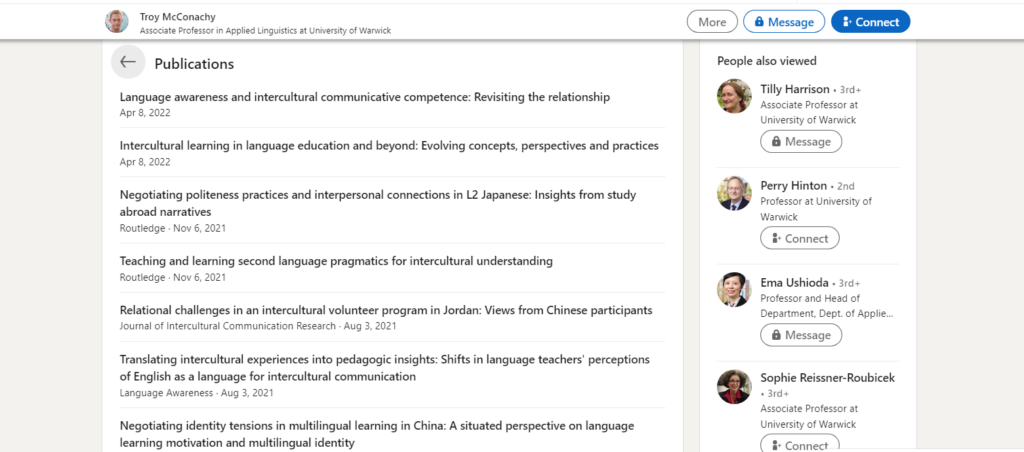
8. Infographics: Infographics are visual representations of data or information related to your industry. They can be a powerful addition to your LinkedIn profile because they can help you express complex ideas clearly and concisely.
In addition to adding publications to your profile, there are other ways to promote your personal brand on LinkedIn. You can add endorsements and recommendations from colleagues and clients, join relevant groups and participate in discussions, and share industry news and information through your feed.
By engaging with the LinkedIn community and showcasing your expertise and knowledge, you can establish yourself as a thought leader in your field and attract new opportunities and clients. Now let us see why to add academic and scientific publications to LinkedIn and if there is any difference in adding publications to LinkedIn from Google Scholar.
Why Add Scientific Publications to LinkedIn is important?
Scientific publications are something that users notice. That’s why I recommend people to include their scientific articles and books in their profiles. Adding scientific publications to your LinkedIn profile is a great way to showcase your expertise and knowledge in your field.
Scholarly publications are a reflection of your research, writing, and analytical skills and demonstrate that you are actively engaged in professional development.
Here are some specific reasons why you should add scientific publications to your LinkedIn profile:
1. Build credibility:
Adding scientific publications to your LinkedIn profile can help build your credibility in your field. By demonstrating your research and writing skills, you can show potential employers or clients that you have the expertise and knowledge to succeed in your field. Scientific journals also show that you are actively engaged in professional development and are committed to keeping up with the latest research and trends in your field.
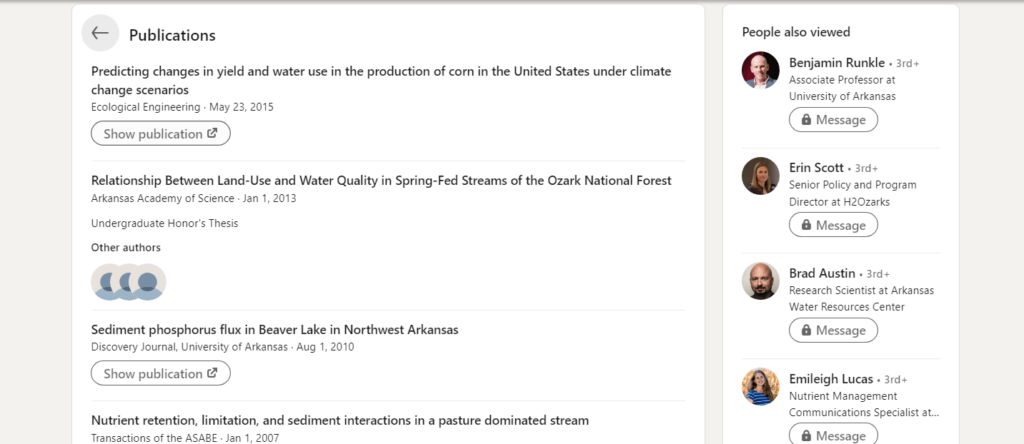
2. Stand out from the competition:
In today’s competitive job market, finding ways to stand out from the crowd is important. Adding scientific publications to your LinkedIn profile can help you do this. By showcasing your research and writing skills, you can differentiate yourself from other professionals in your field and showcase your expertise and knowledge.
3. Network with other professionals:
LinkedIn is a professional networking platform, and adding scientific publications to your profile can help you connect with other professionals in your field. By demonstrating your research and writing skills, you can attract the attention of other professionals who are interested in your work and may be interested in working with you on future projects.
4. Attract new opportunities:
Adding scientific publications to your LinkedIn profile can help you attract new opportunities, such as job offers, consulting work, or speaking engagements. By demonstrating your expertise and knowledge, you can position yourself as a thought leader in your field and attract the attention of potential employers or clients who are looking for someone with your skills and experience.
5. Share your research with a wider audience:
Publishing scientific research can be a time-consuming and challenging process, but by adding your publications to your LinkedIn profile, you can share your research with a wider audience. This can help you get more exposure for your work and can help you connect with other professionals who are interested in your research.
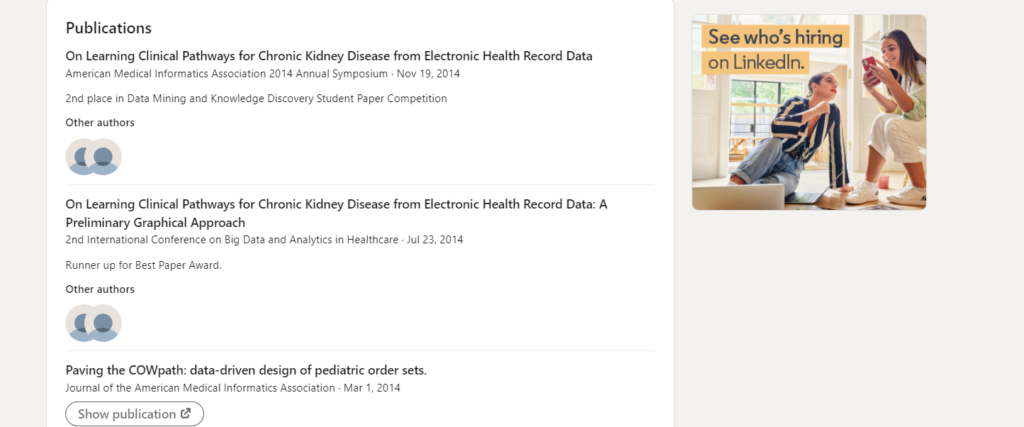
Yes, adding scientific publications to your LinkedIn profile is a great way to showcase your expertise and knowledge in your field, stand out from the competition, network with other professionals, attract new opportunities, and share your research with a wider audience.
If you have published scientific research, be sure to add it to your LinkedIn profile to help build your credibility and demonstrate your expertise.
Why Is It Important To Add Academic Publications On LinkedIn?
Adding academic publications to your LinkedIn profile is important for several reasons:
1. Demonstrate expertise:
Academic publications are a reflection of your expertise and knowledge in your field. Adding them to your LinkedIn profile shows that you’ve done original research, analyzed data, and contributed to the academic conversation in your field. This can help build your credibility and position as a thought leader.
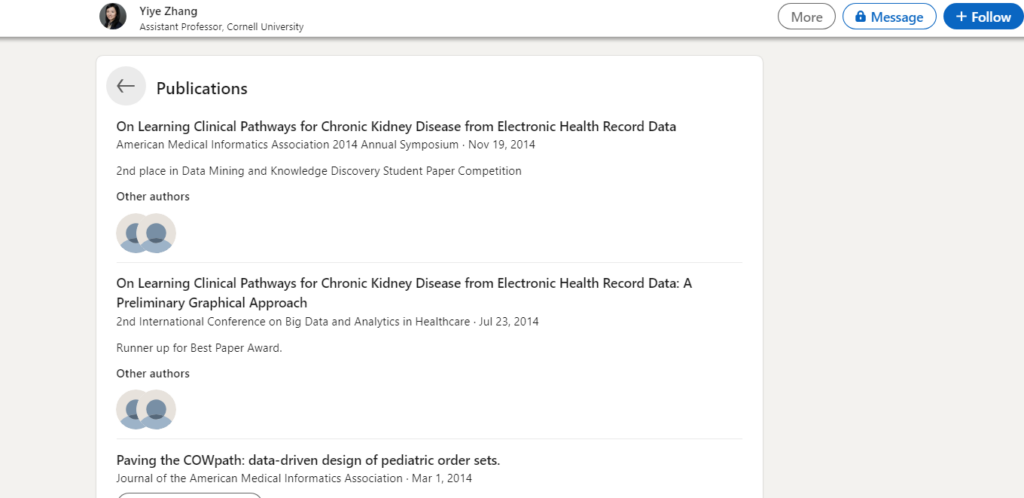
2. Highlight research skills:
Academic publications demonstrate your research skills, including your ability to design studies, collect data, and analyze information. These skills are important ones in many fields, and highlighting them on your LinkedIn profile can help you stand out to potential employers or colleagues.
3. Demonstrates commitment to professional development:
Publishing academic research is a time-consuming and challenging process, and adding publications to your LinkedIn profile shows that you are committed to professional development and staying up-to-date with the latest research in your field.
4. Increases visibility:
Adding academic publications to your LinkedIn profile can increase your visibility to potential employers, colleagues, and peers. It can also help you connect with other researchers or professionals who are interested in your work.

5. Provides evidence of impact:
Academic publications can demonstrate the impact of your research, including citations or mentions in other publications. This can be important for securing funding, promotions, or other opportunities.
6. Helps in networking:
LinkedIn is a professional networking platform and adding academic publications to your profile can help you connect with other researchers or professionals in your field. It can also help you find potential colleagues or mentors who are interested in your work.
Is There a Way to Add Publications to LinkedIn from Google Scholar?
Yes, there is a way to add publications to LinkedIn from Google Scholar. Here are the steps to do this:
- Go to Google Scholar and search for your publication using the title or keywords.
- After finding your publication, click on the title to open the full citation.
- Under Citation, you will see a list of options for exporting the citation. Click on the “Cite” button.
- Choose the citation style you want to use for your LinkedIn profile. APA or MLA are commonly used citation styles for academic publications.
- Copy the provided quote information into the selected quote style.
- Go to your LinkedIn profile and click the “Add Profile Section” button.
- Select “Publications” from the list of options.
- Click on the “Add New Publication” button.
- Paste the citation information into the appropriate fields, including title, authors, publication date, and publication name.
- You can also add a summary of the publication and a link to the full text if it is available online.
- Once you have entered all the information, click the “Save” button to add the publication to your LinkedIn profile.
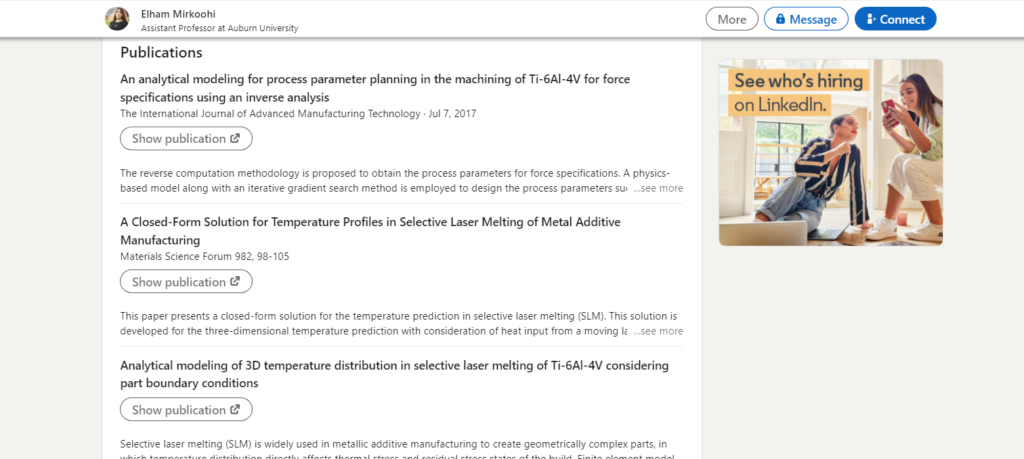
By following these steps, you can easily add your academic publications from Google Scholar to your LinkedIn profile. This can help you showcase your expertise and knowledge in your field and increase your visibility to potential employers and colleagues.
Wrap Up
Adding publications to a LinkedIn profile is an easy way for professionals to demonstrate expertise. It establishes credibility and helps individuals stand out. By following the steps to add publications, a professional can increase their visibility to employers, collaborators, and peers. This may lead to new opportunities.
Using the publication feature shows commitment to career development. It positions a person as an authority in their field. Professionals can benefit from this LinkedIn feature.
Incorporating articles helps professionals gain attention from the right people. Potential employers and connections see research skills firsthand. Shorter publications work best on LinkedIn to prove knowledge and experience concisely. so, if you ever published something under your name, do not hesitate and add it to your LinkedIn profile.
FAQ
How can I add my publications in LinkedIn?
To add publications on LinkedIn, navigate to your profile page and scroll down to the “Accomplishments” section. Click on the “+” button next to “Publications.” In the window that pops up, fill in details about the publication, such as the title, publication date, publication URL, and a brief description. Once you’ve entered the required information, click “Save” to add the publication to your profile.
Do you put your publications on LinkedIn?
Yes, adding publications to your LinkedIn profile can be beneficial, especially if they’re relevant to your profession or showcase your expertise in a particular area. By listing publications, you can demonstrate your thought leadership, depth of knowledge, and contributions to your field. This can be particularly helpful for professionals in academia, research, or any field where publishing work is common.
How to Add a Resume to LinkedIn?
To add your resume to LinkedIn, you can go to your profile, click on the “Add profile section” button, select “Media,” and upload your resume file. Alternatively, you can use LinkedIn’s built-in resume builder tool to create a resume directly on the platform, which can then be added to your profile.
How do you put publications on your LinkedIn resume?
If you’re using LinkedIn to create or export a resume, the platform will automatically include sections from your profile, such as your publications. To ensure your publications appear, first ensure they’re added to your LinkedIn profile under the “Accomplishments” section. When creating your resume through LinkedIn’s tools, review and edit the final document to ensure your publications are listed in a manner consistent with traditional resume formats.
CUFinder Academic Hub, Ultimately Free!
These comprehensive PDFs are your key to mastering the art of professional networking, personal branding, and strategic content creation on LinkedIn.




Comments